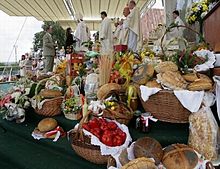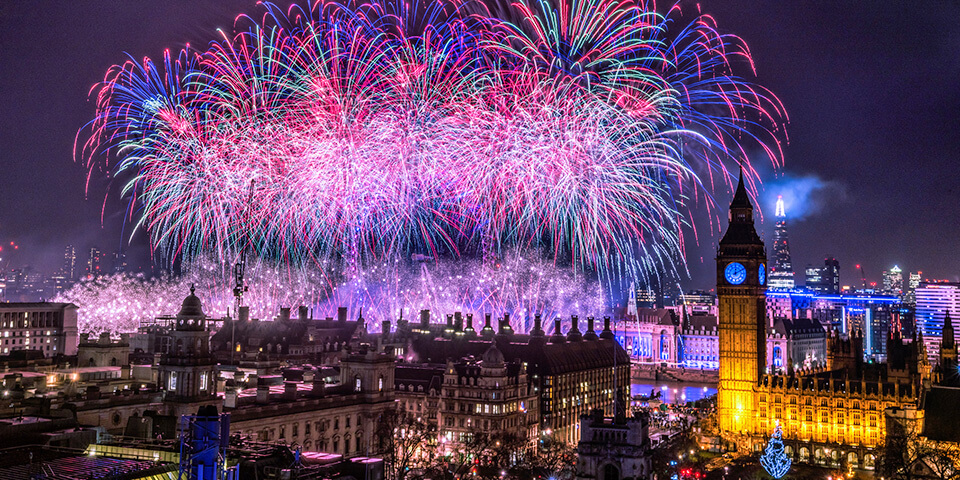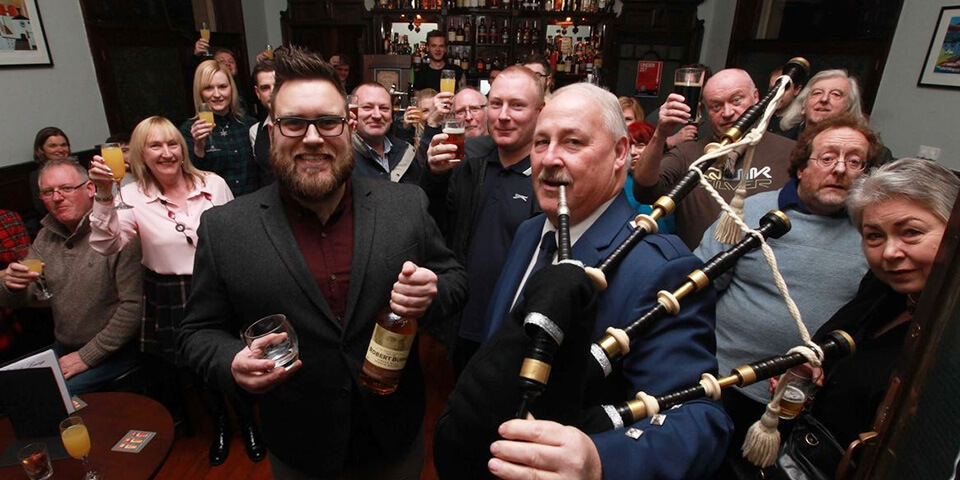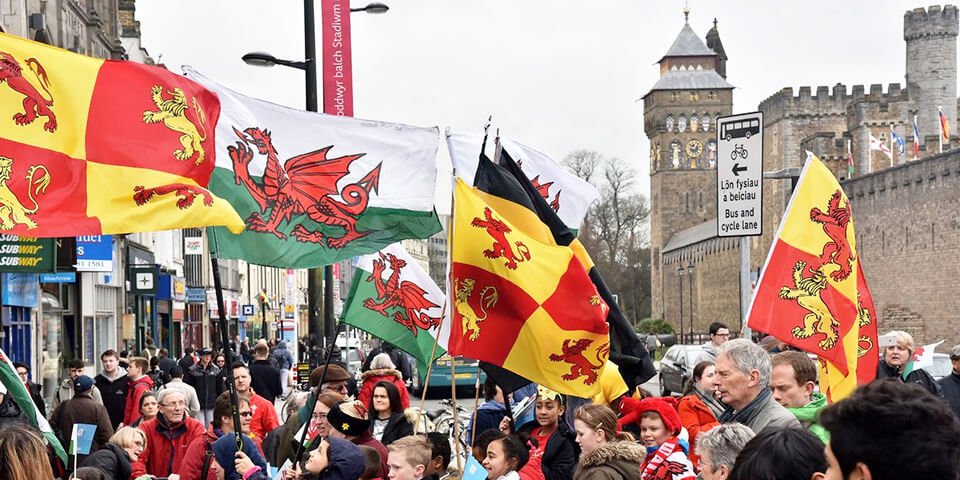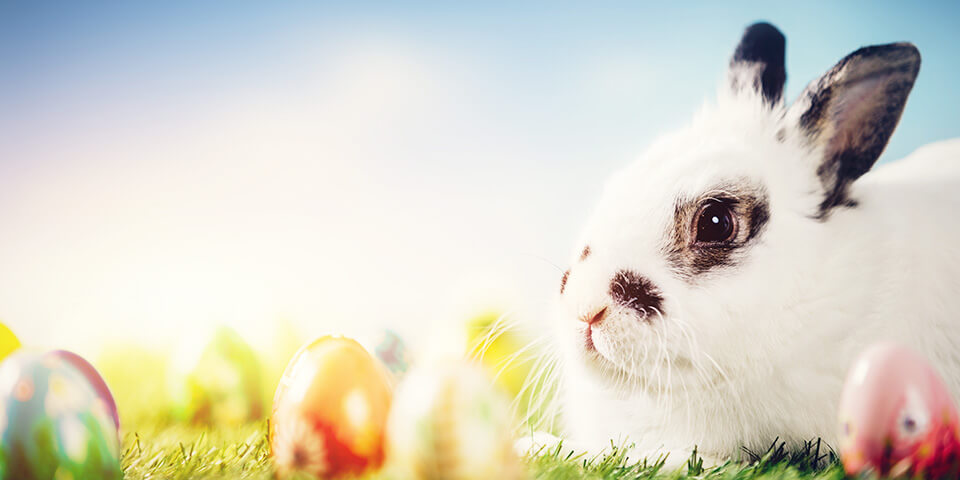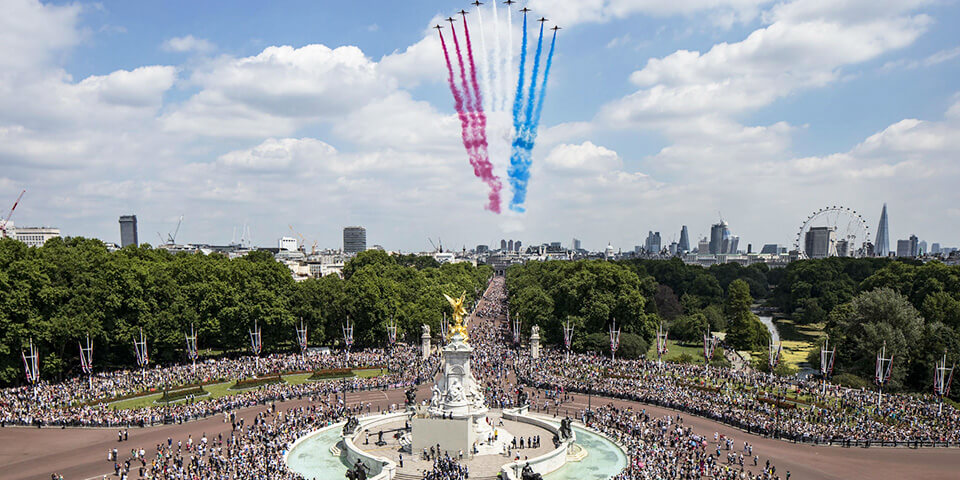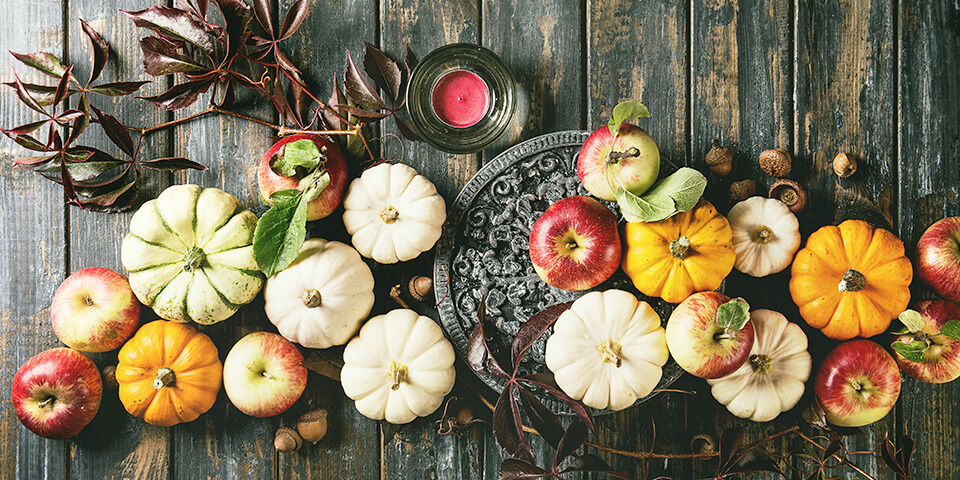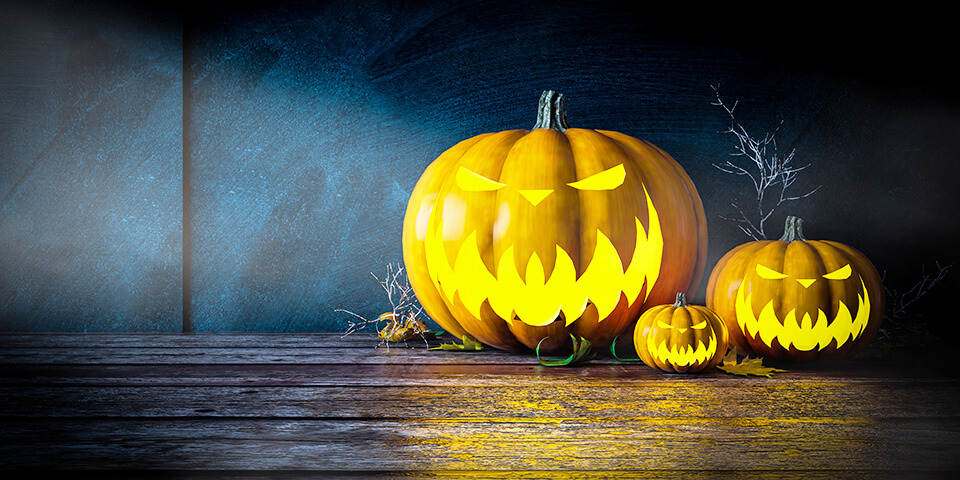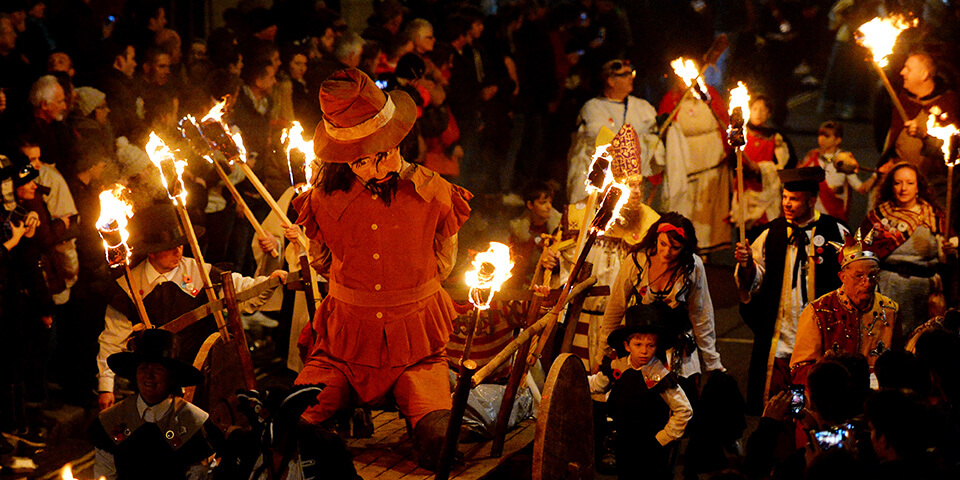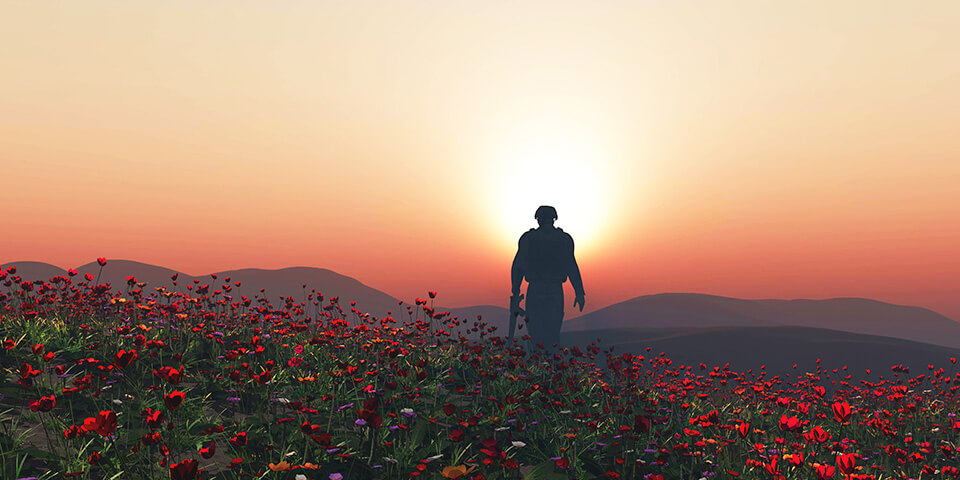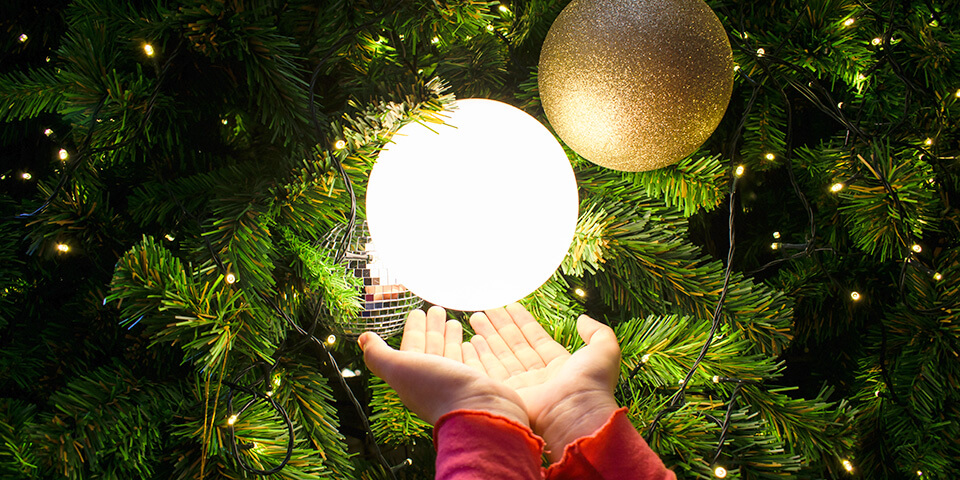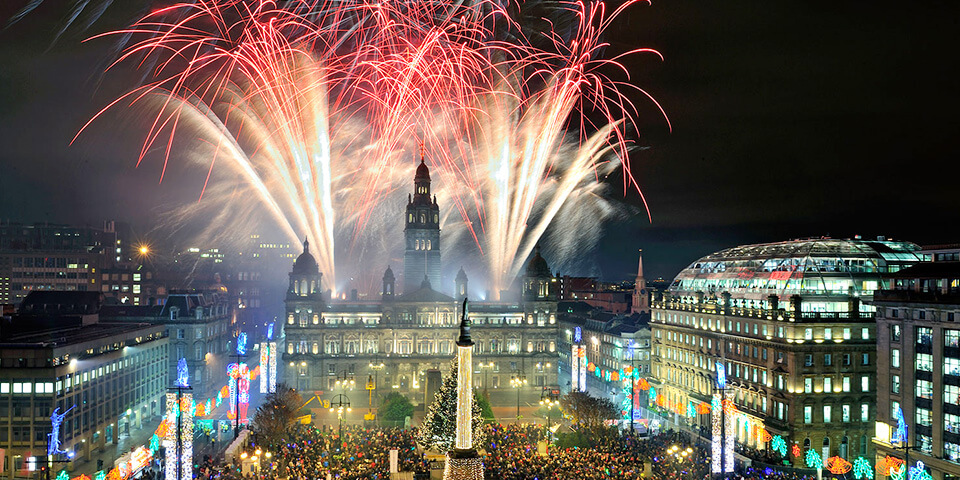From Wikipedia, the free encyclopedia
| Harvest Festival | |
|---|---|

Harvest pumpkins in Warwickshire. |
|
| Observed by | United Kingdom |
| Type | Cultural, religious. |
| Date | The Sunda] |
| Frequency | Annually |
| Related to | Erntedankfest (Germany and Austria) Thanksgiving (Canada) Thanksgiving (United States) |
The Harvest Festival of Thanksgiving is a celebration of the harvest and food grown on the land in the United Kingdom. It is about giving thanks for a successful crop yield over the year as winter starts to approach. The festival is also about giving thanks for all the good and positive things in people’s lives, such as family and friendships.[1][2] Harvest Festivals have traditionally been held in churches but also in schools and sometimes in pubs. Some estates and farms used to hold the harvest festival in a barn. In some towns and villages the harvest festivals are set so that the different churches do not have it on the same day. People bring in produce from their garden, allotment or farm, and even tinned and packaged food. Often there is a Harvest Supper at which some of the produce may be eaten. Typically surplus produce is given away to a local charity, hospital or children’s home, or auctioned for charity.
Date[edit]
Most churches, especially in rural areas, hold a Harvest Festival but the timing varies according to local tradition. Also, many church schools hold one mid-week. Harvest Festivals in the United Kingdom take place on different dates after the end of harvest, usually in September or October, depending on what crops are grown and when they are harvested locally.
Unlike Thanksgiving in the USA, the date has not been made an official public holiday. Though Harvest Thanksgiving day itself is a Sunday, many parades, festivals and services occur on other days around the same date.[3]
External links[edit]
- Harvest Festival
- Thanksgiving
- Harvest
References[edit]
- ^ «Harvest Festivals and Michaelmas». 15 September 2015.
- ^ «Peover Churches » Harvest Festival».
- ^ «British harvest: How long does the season last, when is harvest day, plus history and traditions».
From Wikipedia, the free encyclopedia
| Harvest Festival | |
|---|---|

Harvest pumpkins in Warwickshire. |
|
| Observed by | United Kingdom |
| Type | Cultural, religious. |
| Date | The Sunda] |
| Frequency | Annually |
| Related to | Erntedankfest (Germany and Austria) Thanksgiving (Canada) Thanksgiving (United States) |
The Harvest Festival of Thanksgiving is a celebration of the harvest and food grown on the land in the United Kingdom. It is about giving thanks for a successful crop yield over the year as winter starts to approach. The festival is also about giving thanks for all the good and positive things in people’s lives, such as family and friendships.[1][2] Harvest Festivals have traditionally been held in churches but also in schools and sometimes in pubs. Some estates and farms used to hold the harvest festival in a barn. In some towns and villages the harvest festivals are set so that the different churches do not have it on the same day. People bring in produce from their garden, allotment or farm, and even tinned and packaged food. Often there is a Harvest Supper at which some of the produce may be eaten. Typically surplus produce is given away to a local charity, hospital or children’s home, or auctioned for charity.
Date[edit]
Most churches, especially in rural areas, hold a Harvest Festival but the timing varies according to local tradition. Also, many church schools hold one mid-week. Harvest Festivals in the United Kingdom take place on different dates after the end of harvest, usually in September or October, depending on what crops are grown and when they are harvested locally.
Unlike Thanksgiving in the USA, the date has not been made an official public holiday. Though Harvest Thanksgiving day itself is a Sunday, many parades, festivals and services occur on other days around the same date.[3]
External links[edit]
- Harvest Festival
- Thanksgiving
- Harvest
References[edit]
- ^ «Harvest Festivals and Michaelmas». 15 September 2015.
- ^ «Peover Churches » Harvest Festival».
- ^ «British harvest: How long does the season last, when is harvest day, plus history and traditions».
Главная » Овощи » Как отмечают праздник урожая в Англии?
Как отмечают праздник урожая в Англии?
На чтение 3 мин Просмотров 2.3к. Опубликовано 23.09.2020
Жители Туманного Альбиона, пожалуй, самый консервативный народ в мире. Они рьяно пекутся о соблюдении традиций и обычаев. Тем интересней узнать, что есть у англичан необычные, нетрадиционные праздники.
История праздника
День урожая – один из них. Фестиваль урожая, как еще его называют, отмечается в Англии 23 сентября. В Великобритании праздник известен еще со времен язычества. В День урожая древние англичане благодарили Бога и матушку-природу за богатый урожай. День для празднования выбирался неспроста. Это день, когда полная Луна находится ближе всего к осеннему солнцестоянию. К этому времени завершался сбор урожая многих культур, и англичане устраивали большие гулянья.
[warning]В стародавние времена отмечали сбор урожая ранних культур пшеницы. Из первого урожая пекли каравай, освещали его в церкви и использовали на причастии.[/warning]
В XVI веке некоторые обычаи претерпели ряд изменений. В Великобритании стали праздновать сбор последнего урожая. В телегу насыпали колосья пшеницы, жнецы возили по деревне телегу и громко кричали. Это делалось для того, чтобы все люди знали, что окончена жатва. За добрую весть полагалась хорошая награда. Традиция посещения храма в Англии существует с конца XIX века, когда после жатвы католический священник впервые призвал всех на молебен. Верующие пели хвалебные гимны, читали молитвы. Храм украшали колосьями пшеницы, тыквой и яблоками.
Одна из главных культур на празднике – кукуруза. Ей уделялась особая роль. После того, как было объявлено первыми жнецами об окончании жатвы, нужно было подбросить початок кукурузы вверх. Когда он упадет на землю, смотрели, сколько зерен осталось на земле. Сосчитав, делали вывод о будущем урожае.
Как отмечают сегодня?
В современной Великобритании День урожая отмечают, как сотни лет назад. Жители ходят в церковь, украшенную дарами осени. Также развешивают по всему дому кукурузу, пшеницу, тыкву. В деревнях устраивают веселые шествия девушек, одетых в костюмы пастушек. Молодые люди примеряют на себя одежду жнецов. Устраивают веселые конкурсы: кто быстрей расчешет лошади хвост? Кто лучше украсит хвост коровы?
В этот день обязательно восхваляют землю, благодарят за собранный урожай и просят помощи в будущем. Еще есть такой обычай. Устанавливают стог сена, за ним прячется старший жнец. Он спрашивает собравшихся жителей: видят его или нет. Если ответ – да, то просит землю на будущий год дать урожай еще богаче и стог станет еще выше.
Заканчивается День урожая пышным застольем. К столу подаются традиционные блюда: жареный гусь, лепешки из нескольких сортов муки.
Материал подготовлен порталом Праздники Клаб
The Harvest Festival of Thanksgiving is a celebration of the harvest and food grown on the land in the United Kingdom. It is about giving thanks for a successful crop yield over the year as winter starts to approach. The festival is also about giving thanks for all the good and positive things in people’s lives, such as family and friendships.[1][2] Harvest Festivals have traditionally been held in churches but also in schools and sometimes in pubs. Some estates and farms used to hold the harvest festival in a barn. In some towns and villages the harvest festivals are set so that the different churches do not have it on the same day. People bring in produce from their garden, allotment or farm, and even tinned and packaged food. Often there is a Harvest Supper at which some of the produce may be eaten. Typically surplus produce is given away to a local charity, hospital or children’s home, or auctioned for charity.
| Harvest Festival | |
|---|---|

Harvest pumpkins in Warwickshire. |
|
| Observed by | United Kingdom |
| Type | Cultural, religious. |
| Date | The Sunda] |
| Frequency | Annually |
| Related to | Erntedankfest (Germany and Austria) Thanksgiving (Canada) Thanksgiving (United States) |
DateEdit
Most churches, especially in rural areas, hold a Harvest Festival but the timing varies according to local tradition. Also, many church schools hold one mid-week. Harvest Festivals in the United Kingdom take place on different dates after the end of harvest, usually in September or October, depending on what crops are grown and when they are harvested locally.
Unlike Thanksgiving in the USA, the date has not been made an official public holiday. Though Harvest Thanksgiving day itself is a Sunday, many parades, festivals and services occur on other days around the same date.[3]
External linksEdit
- Harvest Festival
- Thanksgiving
- Harvest
ReferencesEdit
- ^ «Harvest Festivals and Michaelmas». 15 September 2015.
- ^ «Peover Churches » Harvest Festival».
- ^ «British harvest: How long does the season last, when is harvest day, plus history and traditions».
From Wikipedia, the free encyclopedia
A harvest festival is an annual celebration that occurs around the time of the main harvest of a given region. Given the differences in climate and crops around the world, harvest festivals can be found at various times at different places. Harvest festivals typically feature feasting, both family and public, with foods that are drawn from crops.
In Britain, thanks have been given for successful harvests since pagan times. Harvest festivals are held in September or October depending on local tradition. The modern Harvest Festival celebrations include singing hymns, praying, and decorating churches with baskets of fruit and food in the festival known as Harvest Festival, Harvest Home, Harvest Thanksgiving or Harvest Festival of Thanksgiving.
In British and English-Caribbean churches, chapels and schools, and some Canadian churches, people bring in produce from the garden, the allotment or farm. The food is often distributed among the poor and senior citizens of the local community or used to raise funds for the church, or charity.
Harvest festivals in Asia include the Chinese Mid-Autumn Festival (中秋節), one of the most widely spread harvest festivals in the world. In Iran Mehrgan was celebrated in an extravagant style at Persepolis. Not only was it the time for harvest, but it was also the time when the taxes were collected. Visitors from different parts of the Persian Empire brought gifts for the king, all contributing to a lively festival. In India, Makar Sankranti, Thai Pongal, Uttarayana, Lohri, and Magh Bihu or Bhogali Bihu in January, Holi in February–March, Vaisakhi in April and Onam in August–September are a few important harvest festivals.
Jews celebrate the week-long harvest festival of Sukkot in the autumn. Observant Jews build a temporary hut or shack called a sukkah, and spend the week living, eating, sleeping, and praying inside it. A sukkah has three walls and a semi-open roof, designed to allow the elements to enter. It is reminiscent of the tabernacles Israelite farmers would live in during the harvest, at the end of which they would bring a portion of the harvest to the Temple in Jerusalem.
Customs and traditions in English-Speaking World[edit]
An early harvest festival used to be celebrated at the beginning of the harvest season on 1 August and was called Lammas, meaning ‘loaf Mass’. The Latin prayer to hallow the bread is given in the Durham Ritual. Farmers made loaves of bread from the fresh wheat crop. These were given to the local church as the Communion bread during a special service thanking God for the harvest.
By the sixteenth century, several customs seem to have been firmly established around the gathering of the final harvest. They include the reapers accompanying a fully laden cart; a tradition of shouting «Hooky, hooky»; and one of the foremost reapers dressing extravagantly, acting as ‘lord’ of the harvest and asking for money from the onlookers. A play by Thomas Nashe, Summer’s last will, (first published in London in 1600 but believed from internal evidence to have been first performed in October 1592 at Croydon) contains a scene which demonstrates several of these features. There is a character personifying harvest who comes on stage attended by men dressed as reapers; he refers to himself as their «master» and ends the scene by begging the audience for a «largesse». The scene is inspired by contemporary harvest celebrations, and singing and drinking feature largely. The stage instruction reads:
«Enter Harvest with a scythe on his neck, and all his reapers with sickles, and a great black bowl with a posset in it borne before him: they come in singing.»
The song which follows may be an actual harvest song or a creation of the author’s intended to represent a typical harvest song of the time:
Merry, merry, merry, cheery, cheery, cheery,
Trowel the black bowl to me;
Hey derry, derry, with a pop and a lorry,
I’ll throw it again to thee;Hooky, hooky, we have shorn,
And we have bound,
And we have brought Harvest
Townhome.
The shout of «hooky, hooky» appears to be one traditionally associated with the harvest celebration. The last verse is repeated in full after the character Harvest remarks to the audience «Is your throat clear to help us sing hooky, hooky?» and a stage direction adds, «Heere they all sing after him». Also, in 1555 in Archbishop Parker’s translation of Psalm 126 occur the lines:
«He home returnes: wyth hocky cry,
With sheaues full lade abundantly.»
In some parts of England «Hockey» or «Horkey» (the word is spelled variously) became the accepted name of the actual festival itself:
«Hockey is brought Home with hallowing
Boys with plum-cake The Cart following».
Another widespread tradition was the distribution of a special cake to the celebrating farmworkers. A prose work of 1613 refers to the practice as predating the Reformation. Describing the character of a typical farmer, it says:
«Rocke Munday..Christmas Eve, the hoky, or seed cake, these he yearly keeps, yet holds them no relics of popery.»[1]
Early English settlers took the idea of harvest thanksgiving to North America. The most famous one is the harvest Thanksgiving held by the Pilgrims in 1621.
Presidential Harvest Festival in Spała, Poland
Nowadays the festival is held at the end of harvest, which varies in different parts of Britain. Sometimes neighboring churches will set the Harvest Festival on different Sundays so that people can attend each other’s thanksgiving.
Until the 20th century, most farmers celebrated the end of the harvest with a big meal called the harvest supper, to which all who had helped in the harvest were invited. It was sometimes known as a «Mell-supper», after the last patch of corn or wheat standing in the fields which were known as the «Mell» or «Neck». Cutting it signified the end of the work of harvest and the beginning of the feast. There seems to have been a feeling that it was bad luck to be the person to cut the last stand of corn. The farmer and his workers would race against the harvesters on other farms to be first to complete the harvest, shouting to announce they had finished. In some counties, the last stand of corn would be cut by the workers throwing their sickles at it until it was all down, in others the reapers would take it in turns to be blindfolded and sweep a scythe to and fro until all of the Mell was cut down.
Some churches and villages still have a Harvest Supper. The modern British tradition of celebrating the Harvest Festival in churches began in 1843, when the Reverend Robert Hawker invited parishioners to a special thanksgiving service at his church at Morwenstow in Cornwall. Victorian hymns such as Come, ye thankful people, come and All things bright and beautiful but also Dutch and German harvest hymns in translation (for example, We plough the fields and scatter) helped popularise his idea of a harvest festival, and spread the annual custom of decorating churches with home-grown produce for the Harvest Festival service. On 8 September 1854 the Revd Dr William Beal, Rector of Brooke, Norfolk,[2] held a Harvest Festival aimed at ending what he saw as disgraceful scenes at the end of harvest,[3] and went on to promote ‘harvest homes’ in other Norfolk villages. Another early adopter of the custom as an organized part of the Church of England calendar was Rev Piers Claughton at Elton, Huntingdonshire in or about 1854.[4]
As British people have come to rely less heavily on home-grown produce, there has been a shift in emphasis in many Harvest Festival celebrations. Increasingly, churches have linked Harvest with an awareness of and concern for people in the developing world for whom growing crops of sufficient quality and quantity remains a struggle. Development and Relief organizations often produce resources for use in churches at harvest time which promote their own concerns for those in need across the globe.
In the early days, there were ceremonies and rituals at the beginning as well as at the end of the harvest.
Encyclopædia Britannica traces the origins to «the animistic belief in the corn [grain] spirit or corn mother.» In some regions the farmers believed that a spirit resided in the last sheaf of grain to be harvested. To chase out the spirit, they beat the grain to the ground. Elsewhere they wove some blades of the cereal into a «corn dolly» that they kept safe for «luck» until seed-sowing the following year.[citation needed] Then they plowed the ears of grain back into the soil in hopes that this would bless the new crop.
- Church bells could be heard on each day of the harvest.
- A corn dolly was made from the last sheaf of corn harvested. The corn dolly often had a place of honour at the banquet table, and was kept until the following spring.
- In Cornwall, the ceremony of Crying The Neck was practiced. Today it is still re-enacted annually by The Old Cornwall Society.
- The horse bringing the last cartload was decorated with garlands of flowers and colourful ribbons.
- A magnificent Harvest feast was held at the farmer’s house and games were played to celebrate the end of the harvest.
See also[edit]
- List of global Harvest Festivals
- Halloween
- Samhain
- Thanksgiving
- Dozhinki
- Mid-Autumn Festival
- Nabanna
- Niiname-no-Matsuri
Notes[edit]
References[edit]
- ^ Overbury, Thomas Characters: the Franklin, London, 1613
- ^ Dictionary of National Biography
- ^ Mackie, Charles. Norfolk Annals, p. 33. Retrieved on 2020-11-26 at Project Gutenberg
- ^ Burn-Murdoch, Bob (1996). What’s So Special About Huntingdonshire?. St Ives: Friends of the Norris Museum. p. 24. ISBN 0-9525900-1-8.
External links[edit]
- Harvest Festival
- Harvest Festival, BBC
Harvest Festival is a British tradition which goes back all the way to pagan times. It is celebrated on or close to the Sunday of the Harvest Moon – which is the full moon that is closest to the Autumn Equinox. This means that usually, this holiday falls around the end of September, but it may also occur at the beginning of October in some years. The purpose of this holiday is to celebrate the food that the land had provided and to give thanks. In that way, it is much like the American holiday of Thanksgiving.
History of Harvest Festival
The Harvest Festival is a holiday which can be traced all the way back to the ancient Celts when it was celebrated as the seasonal mid-point. It was during this time that people would harvest their grains, store food away for later use and begin preparations for winter. In Old English, the word “hærfest” would mean autumn and it would eventually become the word harvest. In Anglo-Saxon England, these pagan traditions would continue on as Lammas or “loaf mass.” It was during this time that it became customary to ‘bless the bread’, which would later become the tradition of giving thanks for a meal. By the 16th century, a number of traditions had been incorporated into this day. Harvest Festival would continue to evolve over the next few hundred years – until it became the holiday that it is today.
Harvest Festival Customs & Traditions
Today, Harvest Festival is often celebrated with a meal that is shared with friends and family and by decorating homes in Harvest Festival motifs. It is also common for people to attend church on this day, pass out food to the needy, and sing songs or pray.
Some people make corn dolls – which are symbolic of the spirit of the harvest and have been made since pagan times. These dolls are supposed to bring luck to next year’s harvest. This is a tradition that can be traced back to Saxon farmers who believed that the last sheath of corn contained the spirit of the harvest. Sometimes these are turned into children’s toys and sometimes they are hung up on farm houses or on fences.
While some participants are trying to return this holiday back to its pagan roots, most participants just see this holiday as a way to spend time with their families and to give thanks for the good fortune they received all year long.
When is Harvest Festival? |
|
| This year (2023) | Multiple dates — more |
| Next year (2024) | Multiple dates — more |
| Last year (2022) | Multiple dates — more |
Where is Harvest Festival celebrated?
This year (2023):
Turkmenistan (Nov 12, Nov 12, Nov 12, Nov 12, Nov 12, Nov 12, Nov 12, Nov 12, Nov 12, Nov 12, Nov 12, Nov 12, Nov 12, Nov 12, Nov 12, Nov 12, Nov 12, Nov 12, Nov 26) — Malaysia — Labuan, Sabah (May 30)
Next year (2024):
Turkmenistan (Nov 10, Nov 10, Nov 10, Nov 10, Nov 10, Nov 10, Nov 10, Nov 10, Nov 10, Nov 10, Nov 10, Nov 10, Nov 10, Nov 10, Nov 10, Nov 10, Nov 10, Nov 10, Nov 10, Nov 24) — Malaysia — Labuan, Sabah (May 30)
Last year (2022):
Turkmenistan (Nov 13, Nov 13, Nov 13, Nov 13, Nov 13, Nov 13, Nov 13, Nov 13, Nov 13, Nov 13, Nov 13, Nov 13, Nov 13, Nov 13, Nov 13, Nov 13, Nov 13, Nov 27) — Malaysia — Labuan, Sabah (May 30)
Как и все остальные люди в мире, англичане очень любят отмечать праздники. За всю историю Туманного Альбиона накопилось множество праздничных дней, которые отличаются национальным колоритом.
Когда говорят о праздниках Великобритании, имеют в виду праздники сразу четырех стран — Англии, Ирландии, Шотландии и Уэльса.
Так сложилось, что исторически эти территории то объединялись вместе, то разделялись войной, то подписывали соглашение о мире. Поэтому большинство праздников отмечаются на территории всех этих стран, а также в других частях Соединенного королевства.
1 Новый год / 1 января
Как и во всем мире, в Великобритании отмечают Новый год 1 января. Празднество не такое масштабное, как на Рождество, но все же довольно популярное в стране. В полночь англичане отсчитывают бой курантов со знаменитым Биг Беном, а потом идут запускать салюты или продолжают праздничную вечеринку. Если Рождество традиционно является семейным праздником, то Новый год можно провести с друзьями.
2 Ночь Бернса / 25 января
Одним из национальных праздников в Шотландии является день рождения поэта Роберта Бернса (Burns Night). Шотландцы традиционно собираются за праздничным столом с излюбленными блюдами, вроде хаггиса (пуддинг), и устраивают вечер памяти. Обычно они поют песни, играют на волынке и читают стихи Бернса.
3 День Святого Валентина / 14 февраля
Этот праздник популярен во всем мире, и особенно его любят в Великобритании. Раньше он отмечался как католический праздник, но сейчас его празднуют как светский. Все влюбленные Соединенного Королевства 14 февраля проводят день вместе и дарят друг другу подарки.
4 День Святого Давида / 1 марта
Этот праздник отмечается только на территории Уэльса, так как является днем памяти святого покровителя этой страны с XVIII века. Давид Валлийский жил в VI веке, и дата памяти отмечается вместе с днем его смерти в 589 году. Жители Уэльса празднуют день Святого Давида (St. David’s Day) 1 марта, проводят большой парад в Кардиффе, а еще в этот день даже США подсвечивает Эмпайр-стейт-билдинг в цвета уэльского флага.
5 День Святого Патрика / 17 марта
В Ирландии тоже есть свой святой покровитель, Патрик, и в XVII веке дата его смерти была назначена днем памяти. С того времени 17 марта — не только католический день почитания святого Патрика (St. Patrick’s Day), но и праздник культурного наследия Ирландии. Жители страны в этот день устраивают парады и фестивали, наряжаются в зеленую одежду и используют в качестве символики трилистник.
6 Пасха / апрель
Англичане тоже отмечают Пасху (Easter), которая символизирует воскресение Иисуса Христа. В Великобритании этот праздник является главным религиозным событием, поэтому школы закрываются на двухнедельные каникулы. В сам день Пасхи англичане обязательно идут в церковь, надевают новую одежду и украшают дом по-весеннему.
7 Церемония выноса знамени / июнь
Королева Елизавета II отмечает свой день рождения в кругу семьи 21 апреля, а для всей страны — в июне. Традиция официально отмечать день рождения монарха началась в 1748 году, и с тех пор практически ежегодно проходит в июне, исключая дни траура или непогоду. Также в этот день полка Великобритании и Соединенного королевства устраивают красочную церемонию (Trooping the Colours). С 2018 года проводится онлайн-трансляция дня рождения королевы, ведь в этот день можно увидеть конногвардейский парад.
8 Карнавал в Ноттинг-Хилле / август
Ради этого карнавала в Великобритании дают два дополнительных выходных дня, «банковский понедельник» и воскресенье. Праздник проходит с 1959 года, когда на улицы Ноттинг-Хилла впервые вышли беженцы с острова Тобаго. Сейчас этот фестиваль (The Notting Hill Carnival) ежегодно собирает более 2 миллиона человек, а лондонские улицы превращаются в филиал Рио-де-Жанейро.
9 Праздник урожая / 22-23 сентября
Фестиваль урожая (Harvest festival) проводится во многих странах и имеет своей название. Например, в США это — знаменитый День благодарения. В Великобритании его традиционно называют праздником урожая и отмечают 22-23 сентября, в день осеннего равноденствия. В церквях традиционно стоят корзины с овощами и фруктами, люди поют гимны, благодарят за хороший урожай и украшают дома в осенней тематике.
10 Хэллоуин / 31 октября
Сейчас Хэллоуин (Halloween) отмечают во всем мире, но зародился он именно на территории Великобритании. Его традиции берут начало из обрядов древних кельтов, проживавших на территории Ирландии и Шотландии. Кельты с давних времен отмечали Самайн, языческий праздник, когда духи спускались на землю и бродили среди живых. Также язычники отмечали в это время конец сезона урожаев и наступление зимы.
11 Ночь Гая Фокса / 5 ноября
История этого дня, точнее ночи (Guy Fawkes’ Night), началась в 1605 году, когда группа заговорщиков во главе с Гаем Фоксом пытались взорвать английский парламент. Заговор удалось предотвратить, и теперь британцы ежегодно отмечают неофициальный праздник, который еще называют Ночью фейерверков. Жители страны взывают петарды и фейерверки, сжигают чучело Гая Фокса и разводят костры.
12 День памяти (Маковый день) / 11 ноября
День 11 ноября (Remembrance Day) стал памятным по указу короля Георга V в 1919 году, сразу после Первой мировой войны. В этот день британцы и жители стран Британского содружества вспоминают всех солдат, которые погибли, участвуя в конфликтах с участием Великобритании. В народе его еще называют Маковым днем, ведь красный цвет символизирует кровь, пролитую в боях. Также в этот день проводится минута молчания ровно в 11 часов.
13 Рождество / 25 декабря
Пожалуй, самый главный религиозный праздник во всем мире — Рождество (Christmas). В Великобритании его отмечают по католической традиции, 25 декабря, по григорианскому календарю. В этот день англичане проводят время вместе с семьей, дарят подарки и устраивают семейный ужин. За четыре недели до Рождества в стране проходит Адвент.
14 День подарков / 26 декабря
Еще один праздник, который отмечается только на территории Великобритании и в странах Содружества — день подарков. Его традиционно отмечают 26 декабря, а дословно этот праздник переводится как «день коробок» (Boxing Day). Есть несколько версий его происхождения, например, что на второй день Рождества семьи упаковывали остатки праздничной еды и маленькие подарки, а затем относили нищим.
15 Хогманай / 31 декабря
Этот праздник традиционно отмечается только в Шотландии и означает последний день года. Он растягивается на два дня и обычно сопровождается фейерверками, кострами и файер-шоу. Шотландцы любят в эти дни ходить по гостям и соседям, а также по традиции уделяют особое внимание самому первому гостю в новом году.
Все эти праздники популярны не только на территории Англии, Шотландии, Ирландии и Уэльса, но и в странах Британского содружества.
Эти мероприятия объединяют такие разные страны Соединенного королевства и подчеркивают индивидуальность каждой страны.
Нравится статья? Поддержи наш проект и поделись с друзьями!



